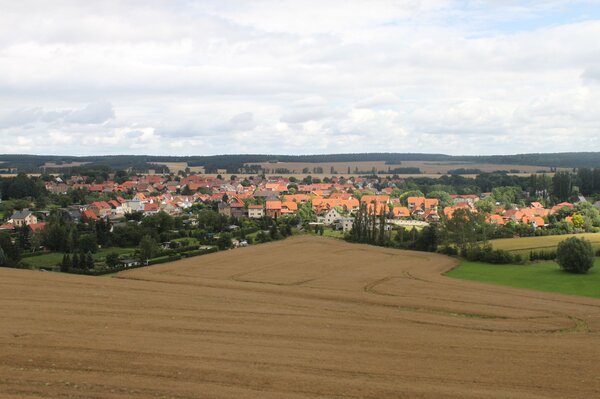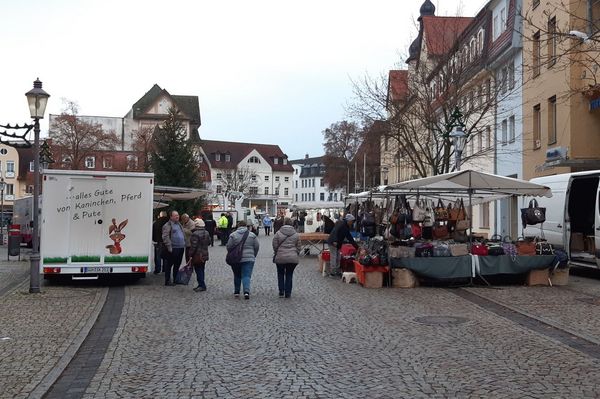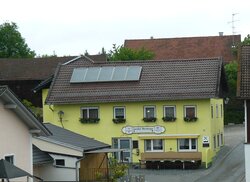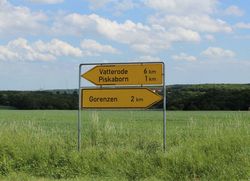Dossier
Living and working in rural areas
Annett Steinführer | 11.05.2022
Even in the "century of cities," people are not only concentrated in large cities, but remain anchored in rural areas. Settlement structures and living situations have changed fundamentally within just a few decades.
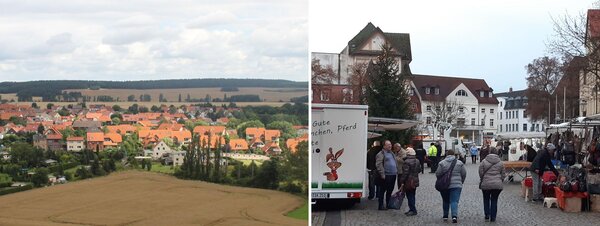
Villages and small towns are the most important settlement types of rural areas in Germany and Central Europe. This is where people live and work, where social life takes place, and where everyday life is constantly reshaped.
According to the Current Spatial Monitoring of the Federal Institute for Research on Building, Urban Affairs and Spatial Development (BBSR), as of 2019, about 10 percent of the total population in Germany lived in rural communities and another 29 percent in small towns. These figures alone are reason enough for social science spatial research to take a closer look at these settlement types and their living conditions.
Until the middle of the 20th century, the village stood for many people for a unity of life and work - the latter primarily meant agriculture, in some regions also forestry or fishing, as well as crafts and trade. Today, the village is primarily a place of residence with often extensive new development areas on the edge of the village and a thinned-out supply function for the population, as well as a place of work for small and micro-businesses, such as self-employed tradesmen. Although mostly surrounded by agricultural land, the primary sector as an employer, on the other hand, hardly plays a role in the local economy any more - in many a village there is not a single woman or man farmer in the main occupation today. Without exaggeration, it can be said that hardly any process has changed the appearance and function of today's villages in Germany as much as the structural change in agriculture - i.e., processes of mechanization, rationalization and intensification, which since the 1950s (and in some cases even earlier) have contributed to a long-term and extraordinarily strong reduction in the agricultural workforce, to the dissolution of small farms and to an increase in the productivity of agricultural enterprises.
Parallel to this structural change, there was an urbanization of society as a whole and the infrastructural "furnishing" of the village - i.e., equipping it with schools, community centers and technical infrastructure, for example. Today, villages are characterized by a mixed social structure; commuting is the norm. Their composition in terms of age structure depends strongly on the geographic location of the village (for example, in terms of proximity to a population center) and the demographic development of the respective region: Thus, there are villages in which older population groups predominate and others in which many families with children also live. As a rule, their places of work are no longer located in the village, and commuting to work and to utilities is the norm. Living conditions in various villages nationwide are among the subjects of a unique long-term research project at the Thünen Institute.
But when does one actually call a settlement a village? Is the size and location of a village alone relevant, or are other characteristics also important? Although there are no universally valid answers to these questions, the village cannot be defined arbitrarily. In Central Europe, according to geographer Gerhard Henkel, one speaks of a village if it is a rural settlement with a size of about 100 inhabitants or more, or 20 households. Smaller rural settlements are referred to as Bauerschaften or Weiler, for example, depending on the region and agricultural structure. Large villages can have up to 400 houses or farmsteads and more than 2,000 inhabitants. Or even more: For example, the population of settlements eligible to participate in the nationwide competition "Our Village Has a Future" (formerly "Our Village Shall Become More Beautiful") has been limited to a constant 3,000 inhabitants since 1961. In addition to the population size, it is the agricultural character and an agrarian building structure - regardless of whether the buildings are still used in this way today or not - that are considered defining characteristics of the village.
Villages come in many shapes and locations: There is the village as a single rural settlement, surrounded by and connected to the surrounding cultural landscape. But there are also villages in the so-called "Speckgürtel" of larger cities. Last but not least, villages are part of larger and smaller cities, because they have been incorporated into higher-level administrative units since the end of the 19th century.
Small towns are supply, economic and cultural centers of rural areas. In many places, they also play an important role for their surrounding areas as the seat of administrations and political bodies. In terms of spatial planning, their importance is enhanced by the assignment of a status as a basic center or subcenter with facilities for basic needs for the urban population and its surrounding area, or as a medium-sized center in which there are also central-location facilities and offerings to meet higher-quality needs.
Whether a city is considered "small" depends on the standard of comparison and national conventions. In Denmark, for example, small towns have between 1,000 and 5,000 inhabitants, in the USA less than 50,000. In Germany, small towns have been identified in official statistics since 1875 as places with between 5,000 and 20,000 inhabitants. Even smaller towns are sometimes referred to as "country towns," while larger ones are considered medium-sized towns. Settlements with 100,000 or more inhabitants are categorized as large cities. This purely quantitative city definition was a logical response in the 19th century to the social megatrend of urbanization in the course of industrialization and the loss of importance of the previously so important legal city status. Today, this typification based on population size is still in use - sometimes supplemented by changing centrality criteria. In the BBSR's ongoing spatial monitoring, municipalities of an association of municipalities or a unitary municipality are understood as small towns if either 5,000 to less than 20,000 inhabitants live there or if regional planning has assigned them at least basic centrality or partial functions of a medium-sized center.
As in the case of the village, it must also be noted for the small town that a relatively small population is a necessary criterion, but not a sufficient one. In addition, the type of development is less dense than in large cities, but still urban. This is associated with a small-scale and relatively stable ownership structure. Typical for small towns in Germany and significant for the local identity are also historical structural remains, such as a town wall or a historic town hall.
For the majority of small towns in economically weak regions, the decades since reunification in 1990 have been associated with pronounced job losses in industry and agriculture, but also in the public sector (for example, in administrations and the military). This is particularly true for eastern Germany, but economic structural weakness, combined with negative consequences of demographic change, was and is also a characteristic of regions in the western German states, for example near the former inner-German border. Many small towns lost important infrastructure facilities, such as secondary schools, and had to cope with population declines, especially due to out-migration. Looking at more recent data, small towns in western Germany have seen slight population gains again since the 2011 census, or more precisely between 2012 and 2019, and the shrinkage of small towns in eastern Germany has decreased. The number of unemployed in relation to the working-age population has declined everywhere over the same period. This is not only, but also, due to a declining working-age population - one of many consequences of demographic change.
Small towns complement Germany's diverse urban landscape and make it particularly clear that "town" and "country" are not absolute spatial categories, because the typical small town in Germany today consists of a core that was often medieval in its origins and a smaller or larger number of villages incorporated in the course of the 20th and 21st centuries.
Further literature (in German)
Harteisen U (2021) Das Dorf – ein unterschätzter Wirtschaftsstandort? Südniedersachsen – Zeitschrift für Regionale Forschung und Heimatpflege 49 (3), 105-109.
Henkel G (2020) Der ländliche Raum. Gegenwart und Wandlungsprozesse seit dem 19. Jahrhundert in Deutschland. 5. ergänzte u. neu bearb. Aufl. Stuttgart.
Laschewski L, Steinführer A, Mölders T, Siebert R (2019) Das Dorf als Gegenstand sozialwissenschaftlicher Forschung und Theoriebildung. Zur Einführung. In: Steinführer A, Laschewski L, Mölders T, Siebert R (Hrsg.) Das Dorf. Soziale Prozesse und räumliche Arrangements. Berlin, 3-56.
Milbert A, Porsche L (2021): Kleinstädte in Deutschland. Bonn.
Steinführer A, Porsche, Lars; Sondermann, Martin (Hrsg.): Kompendium Kleinstadtforschung. Forschungsberichte der ARL 16. Hannover.

